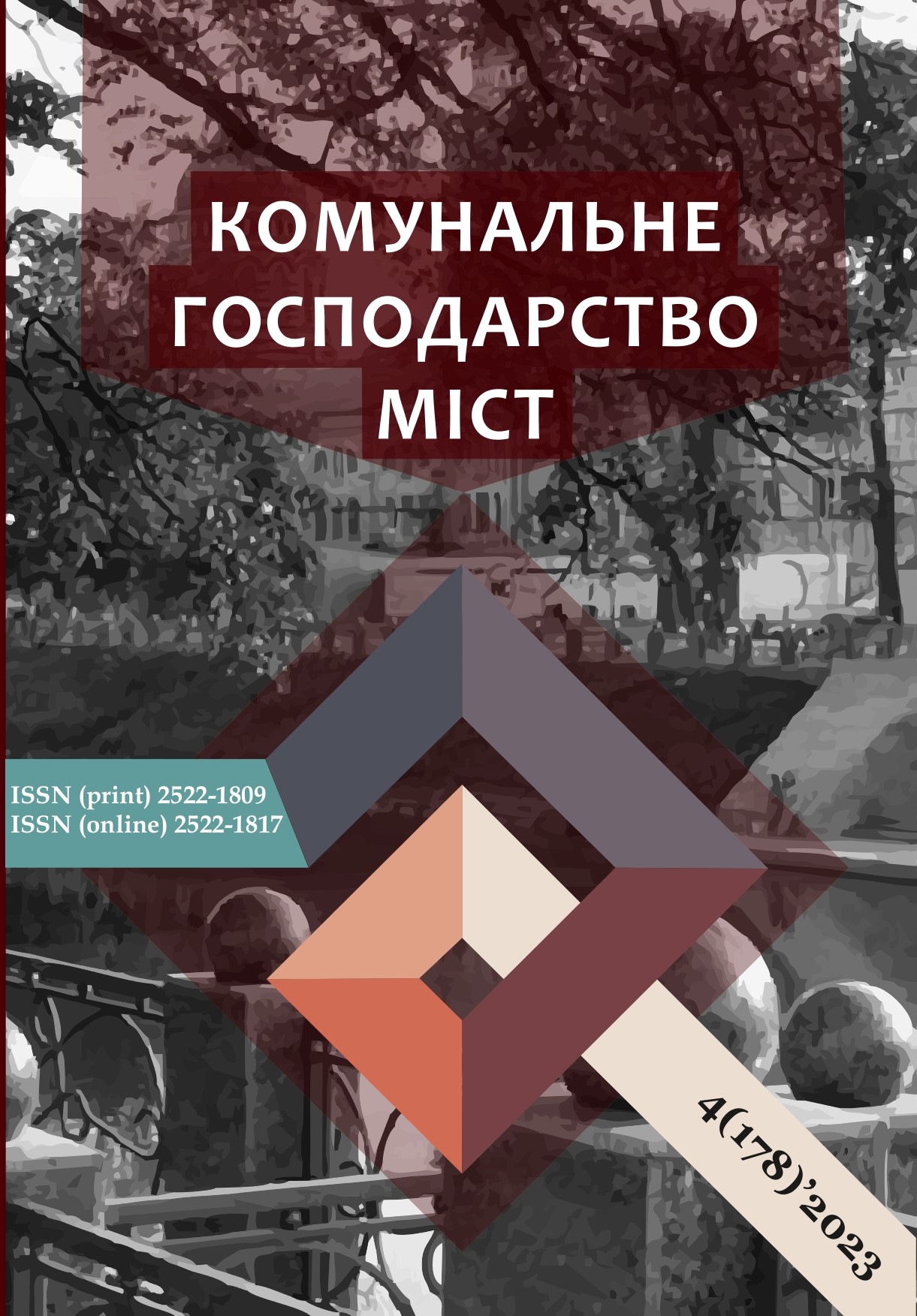METROLOGICAL PROVISION OF WORKPLACE CERTIFICATION ACCORDING TO WORKING CONDITIONS
DOI:
https://doi.org/10.33042/2522-1809-2023-4-178-286-292Keywords:
harmful and dangerous factors, certification of the workplace, uncertainty of measurements, checking, verificationAbstract
The purpose of the study is to determine the requirements for research methods, measurements with the help of FTA of harmful and dangerous production factors, which will allow to ensure a high level of attestation of workplaces according to working conditions.
The task of the research includes consideration of issues related to ensuring the unity of measurements in the field of labor safety, compliance of metrological activity in the specified field with the requirements of current legislation in the field of metrology.
The task of the research is also to identify problems related to the methodological support of laboratory research in the field of occupational safety, the absence of metrological requirements for laboratory research methods, metrological confirmation of FTAs, which are intended to perform workplace attestation.
Currently, there are separate scientific works on the development of standard procedures for measuring dangerous or harmful factors of the production environment, there is an established norm for any harmful parameter, but there is no national order in the methodology of measuring each parameter. Individual measurement methods do not have the status of a normative legal act. Thus, at present, there are no legal acts regulating mandatory methods of measuring the parameters of harmful factors of the production environment and the labor process during workplace attestation. Analyzing regulatory documents, it can be concluded that from the main documents establishing the standardization of some factors of the working environment, the accuracy of measurements was established only for microclimate parameters.
It should be concluded that in the field of labor protection, the state of ensuring the unity of measurements cannot be recognized as satisfactory. Summing up, we can come to the disappointing conclusion that for a reliable assessment of working conditions in workplaces, it is necessary to follow the methods of measurement and calculation of measurement uncertainty, which, unfortunately, are not always set out in mandatory documents.
References
Radchuk, D., Cheberyachko, Y. (2015) The influence of measurement uncertainty on the quality indicators of life safety respirators in transport and production. Education, science, practice, 201-203.
Meshcheryakova, I. (2021) Increasing the safety of operators, taking into account the parameters of the light environment of production premises Diss. Dnipro State Academy of Construction and Architecture, 223.
Neezhmakov, P., Kupko, O., Tereshchenko, V. (2017) Current state of metrological support of light measurements in Ukraine. Ukrainian Metrological Journal, 3, 17-23. https://doi.org/10.24027/2306-7039.3.2017.114652
Dudko, N., Zubretska, N. (2018) Development problems of the state system of ensuring the unity of measurements. Mechatronic systems: innovation and engineering. Kyiv National University of Technology and Design, 166-169.
Tomaschek, A., Sarah S. Lütke Lanfer, Melzer, M., Debitz, U Buruck, G. (2018) Measuring work-related psychosocial and physical risk factors using workplace observations: a validation study of the “Healthy Workplace Screening” Safety science. 101, 197-208. https://doi.org/10.1016/j.ssci.2017.09.006
Kanten, Selahattin (2013) The relationships among working conditions, safety climate, safe behaviors and occupational accidents: An empirical research on the marble workers. The Macrotheme Review, 2, 4, 173-182.
Mahdavi, N., Dianat, I., Heidarimoghadam, R., Khotanlou, H. (2020) A review of work environment risk factors influencing muscle fatigue. International journal of industrial ergonomics, 80, 103028. http://dx.doi.org/10.1016/j.ergon.2020.103028
Jo’raboyevich, Badalov Nomoz (2022) Role of comparison, calibration and metrological certification in enterprises. Web of Scientist: International Scientific Research Journal, 3, 10, 168-175. https://doi.org/10.17605/OSF.IO/FP298
Panula, Tuukka. Jukka-Pekka Sirkiä; David Wong; Matti Kaisti (2022) Advances in non-invasive blood pressure measurement techniques. IEEE Reviews in Biomedical Engineering, 16: 424-438. https://doi.org/10.1109/RBME.2022.3141877
Akl, M.A. (2022) Validation of two clinical color measuring instruments for use in dental research. Journal of Dentistry, 125: 104223. https://doi.org/10.1016/j.jdent.2022.104223
Krainiuk, O., Buts, Yu., Barbashyn, V. (2021) SWOT Analysis of the introduction of digital technologies to ensure labor safety. Municipal economy of cities, 3(163), 234-238. https://doi.org/10.33042/2522-1809-2021-3-163-234-238
Krainiuk, O., Buts, Yu., Barbashyn, V., Didenko, N. (2020) Prospects of digitization in the field of labor protection. Municipal economy of cities, 6(159), 130-138. https://doi.org/10.33042/2522-1809-2020-6-159-130-138
Krainiuk, O., Buts, Yu., Barbashyn, V., Lotsman, P., Kalchenko, D. (2021) Increasing the reliability of remote methods of measuring human body surface temperature Municipal economy of cities, 4(164), 197–202. https://doi.org/10.33042/2522-1809-2021-4-164-197-202
Krainiuk, O., Buts, Yu., Barbashyn, V., Didenko, N. (2023) Analysis of areas of application of unmanned aerial vehicles for solving occupational safety issues. Municipal economy of cities, 1(175), 182–188. https://doi.org/10.33042/2522-1809-2023-1-175-182-188
Downloads
Published
How to Cite
Issue
Section
License
The authors who publish in this collection agree with the following terms:
• The authors reserve the right to authorship of their work and give the magazine the right to first publish this work under the terms of license CC BY-NC-ND 4.0 (with the Designation of Authorship - Non-Commercial - Without Derivatives 4.0 International), which allows others to freely distribute the published work with a mandatory reference to the authors of the original work and the first publication of the work in this magazine.
• Authors have the right to make independent extra-exclusive work agreements in the form in which they were published by this magazine (for example, posting work in an electronic repository of an institution or publishing as part of a monograph), provided that the link to the first publication of the work in this journal is maintained. .
• Journal policy allows and encourages the publication of manuscripts on the Internet (for example, in institutions' repositories or on personal websites), both before the publication of this manuscript and during its editorial work, as it contributes to the emergence of productive scientific discussion and positively affects the efficiency and dynamics of the citation of the published work (see The Effect of Open Access).

